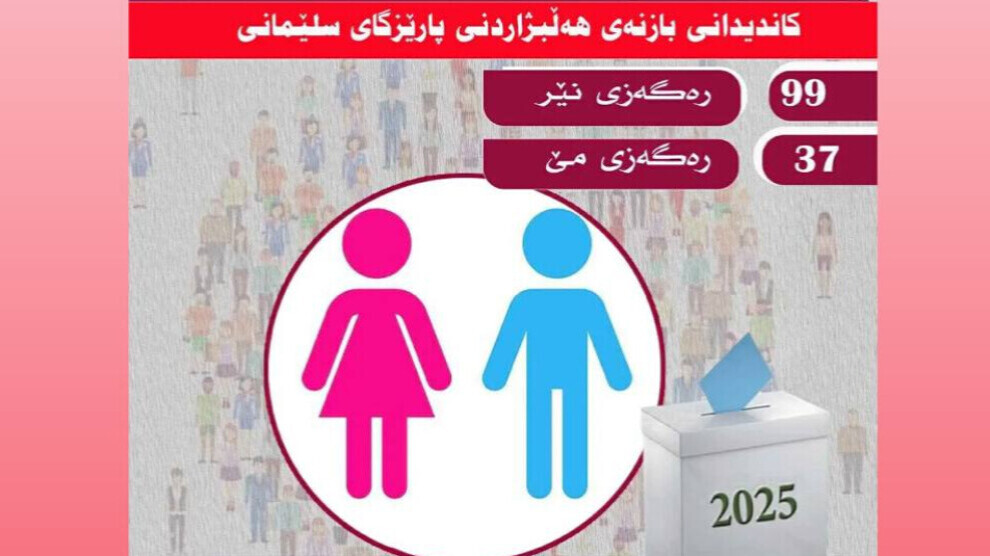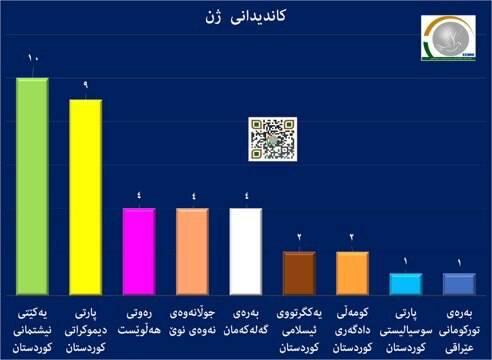Women in Iraqi Elections… Limited Participation Despite Challenges
Statistics for the upcoming Iraqi parliamentary elections in November show a clear gender gap, with the number of male candidates being three and a half times that of female candidates across Iraq, especially in the city of Sulaymaniyah.

By Lawa Kurdi
The Independent High Electoral Commission (IHEC) announced that 7,769 candidates have registered to run in the sixth session of Iraq’s parliament, including 2,248 women. A total of 5,520 candidates will compete for 329 parliamentary seats.
In this context, the organization “Kurdistan for All – for the Development of Democracy” reported that among the 136 candidates in the sixth parliamentary cycle, 37 are women, indicating a notable level of female participation in the electoral process.
In the Sulaymaniyah constituency, 37 women have been nominated for the sixth parliamentary elections, representing several political parties:
- Patriotic Union of Kurdistan (PUK): 10 candidates
- Kurdistan Democratic Party (KDP): 9 candidates
- Ittijah al-Tarashuh (Direction of Nomination): 4 candidates
- Nawa Nawa Movement: 4 candidates
- Our People’s Front: 4 candidates
- Kurdistan Islamic Union: 2 candidates
- Kurdistan Justice Association: 2 candidates
- Kurdistan Socialist Party: 1 candidate
- Iraqi Turkmen Front: 1 candidate
As for the female candidates in Duhok and Kirkuk, detailed numbers and party distribution have not yet been released.
According to the IHEC, 20 women out of 59 total candidates have been nominated across all political parties in one electoral district, while Kirkuk will have 252 candidates, including 73 women.

Marginalization of Women
The low percentage of female candidates in Iraq’s parliamentary elections compared to their male counterparts is largely due to amendments in the electoral system governing women’s representation. After earlier calls to allocate 50% of parliamentary seats to women, the new electoral law reduced this quota to 25%, a move that activists and observers have criticized as a setback in the effort to strengthen women’s political participation. This change underscores the barriers women continue to face in accessing decision-making positions.
According to the Iraqi Constitution and Article 16 of the 2019 Law of the House of Representatives, women’s representation in parliament must not fall below 25%, meaning 84 out of 329 seats are reserved for women.
However, during the fifth parliamentary elections, women won 97 seats, accounting for 30% of parliament — an increase of 14 seats beyond the required quota. Despite this progress, women’s exclusion from legislative and decision-making positions remains significant, and their representation continues to lag behind men’s, limiting their ability to fully exercise their right to run for office and hold parliamentary positions
